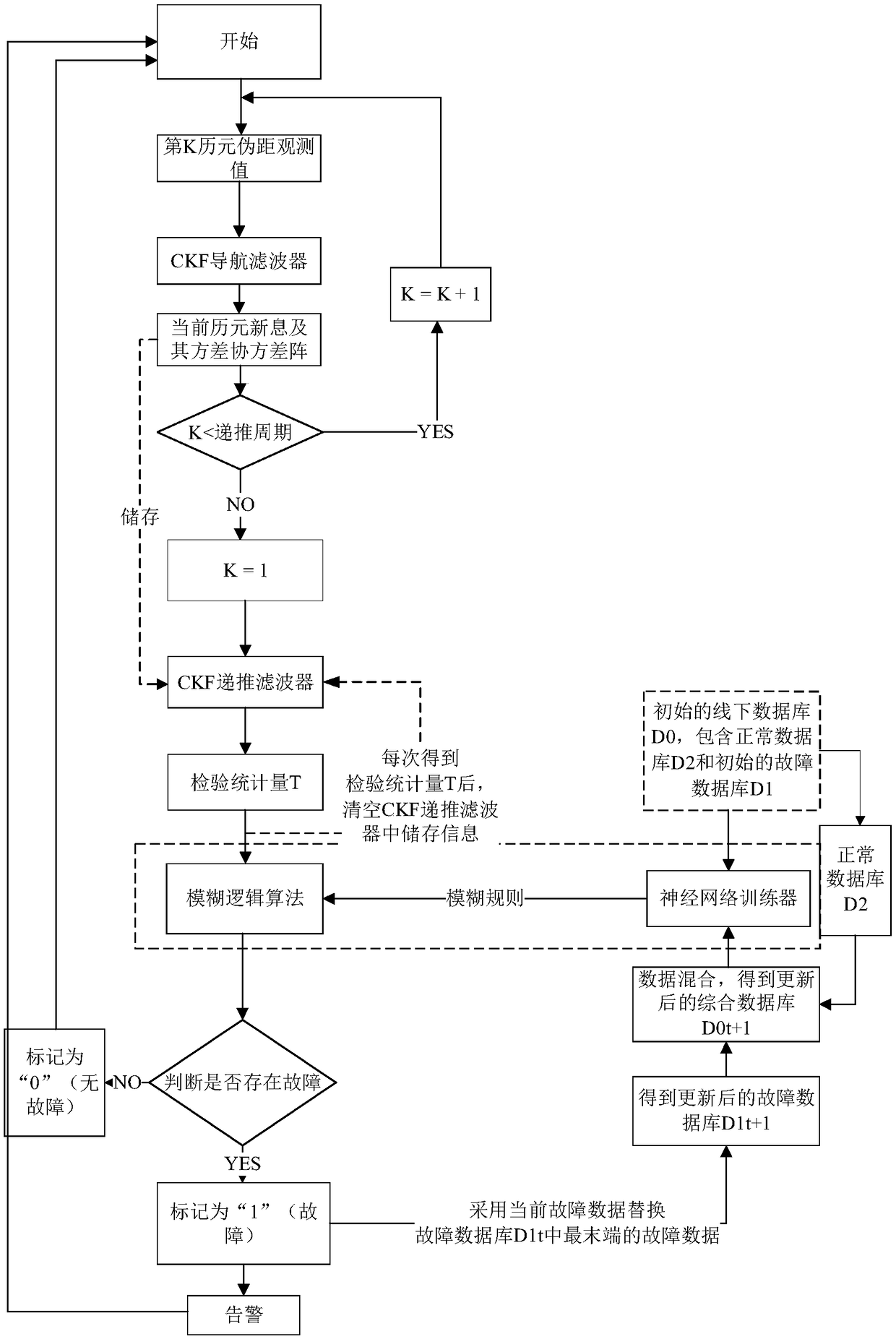Method for monitoring autonomous integrity of GNSS receiver
An integrity monitoring and receiver technology, applied in the field of measurement and testing, which can solve problems such as slow unmodeled faults, low computational complexity, and inability to adapt to fault detection requirements, and achieve the effect of avoiding first-order approximation processing.
- Summary
- Abstract
- Description
- Claims
- Application Information
AI Technical Summary
Problems solved by technology
Method used
Image
Examples
Embodiment Construction
[0027] Combine below figure 1 The technical solution of the invention is described in detail.
[0028] The core content of the present invention is the RAIM algorithm based on CKF and the innovation extrapolation method, and according to the innovation and its variance-covariance matrix before several epochs generated in the innovation extrapolation process, the test statistics of the extrapolation time are established, The database that uses test statistics as the fault judgment can update the judgment rules in real time while judging whether there is a fault or not. It has the advantages of less calculation, appropriate accuracy, suitable for nonlinear systems, and can monitor small slowly changing pseudorange deviations with high confidence. advantage.
[0029] The CKF (Cubature Kalman Filter) algorithm relies on the Gaussian filter framework, and according to the third-order sphere-phase diameter volume rule, approximates the posterior mean and variance-covariance of the ...
PUM
 Login to View More
Login to View More Abstract
Description
Claims
Application Information
 Login to View More
Login to View More - R&D
- Intellectual Property
- Life Sciences
- Materials
- Tech Scout
- Unparalleled Data Quality
- Higher Quality Content
- 60% Fewer Hallucinations
Browse by: Latest US Patents, China's latest patents, Technical Efficacy Thesaurus, Application Domain, Technology Topic, Popular Technical Reports.
© 2025 PatSnap. All rights reserved.Legal|Privacy policy|Modern Slavery Act Transparency Statement|Sitemap|About US| Contact US: help@patsnap.com



